Kangxi Blue-and-White Landscape-Patterned Pipa Zun of the Qing Dynasty
A Paragon of Imperial Porcelain with the Artistic Conception of Literati Landscape
[Overview of the Collection]
This piece is a blue-and-white landscape-patterned pipa zun fired in the Jingdezhen kiln during the Kangxi reign (1662 – 1722) of the Qing Dynasty. It is a classic work of early Qing Dynasty blue-and-white porcelain. With an elegant and dignified shape, bright and vivid blue-and-white coloring, and a well – composed pattern with proper density, it combines practicality and ornamental value. It is a perfect blend of Oriental classical aesthetics and porcelain – making techniques, and can be regarded as a传世 treasure that combines the style of the imperial kiln of the Qing Dynasty and the artistic conception of literati.
[The Beauty of the Shape: The Elegance of the Pipa with Smooth Lines]
This porcelain is named “pipa zun” because its shape resembles a traditional pipa, a musical instrument. It is a typical decorative porcelain of the Kangxi period in the Qing Dynasty. The mouth is slightly flared, the neck is constricted, the abdomen is plump, and the foot is flared outwards. The overall lines are smooth from top to bottom – the neck converges inwards, the abdomen is round and full, and the foot expands steadily outwards, showing both grandeur and a lively rhythm. It demonstrates the precise control of the porcelain – making craftsmen in the early Qing Dynasty over the proportion of the shape. The body of the porcelain is firm and delicate, and the glaze is as smooth as jade. Under the light, the glaze is transparent, and the combination of the body and the glaze is tight. It has maintained a good condition after three hundred years.
[The Exquisite Patterns: Landscape in Porcelain with a Distant Conception]
The whole piece is decorated with blue – and – white patterns, which are well – structured and carry auspicious meanings, fully showing the aesthetic taste of the literati in the Qing Dynasty:
-
Mouth Rim: It is decorated with a circle of blue – and – white fret patterns. The curled and smooth lines imply “continuous wealth and endless life”, which is a classic border decoration for porcelain in the Qing Dynasty.
-
Main Pattern on the Abdomen: A landscape and figure painting is depicted. The distant mountains are tinged with blue, the nearby trees are lush, and the pavilions and towers are hidden among the ancient pines and cypresses. The gurgling stream and the winding path present a secluded scenery of a southern Chinese village like “a small bridge over a flowing stream and a cottage”. The painter uses the “fen shui cun” technique to show the texture of the rocks. The blue – and – white color fades gradually and naturally. The rocks in the foreground are painted with thick and heavy colors, while the distant mountains are rendered with light blue, creating a three – dimensional effect of “five shades of ink”. The brushstrokes are strong and free, and the details of the figures and buildings are clearly distinguishable, fully showing the landscape conception of “a thousand – mile view within a short distance”.
-
Foot: It is decorated with the “ten – thousand – character pattern without an end” geometric pattern. The interlaced and repeated lines symbolize “longevity and endless good fortune”, echoing the fret pattern on the mouth rim, making the overall pattern layout harmonious and unified.
[The Peak of Craftsmanship: Kangxi Blue – and – White, Bright and Vivid]
This piece uses the iconic blue – and – white technique of the Kangxi reign in the Qing Dynasty, fully demonstrating the peak level of “Kang kiln blue – and – white”:
-
Materials: High – quality Zhejiang materials (or Zhuming materials) are selected. The blue – and – white color is bright and green, with rich color gradations, showing “five shades of the material” – the transition from dark ink to light blue is natural without blurring, reflecting the typical characteristics of “emerald blue” and “gem – blue” of Kangxi blue – and – white.
-
Firing: It is fired at a high temperature in one go. The under – glaze blue – and – white color is stable, the glaze surface is smooth and flat without ice – crack patterns, the body is dense, and it makes a clear sound when tapped, highlighting the strict firing control of the Jingdezhen imperial kiln factory.
-
Painting: All the patterns on the piece are hand – painted. The painter outlines the contours with the “iron – wire drawing” technique and then fills in the colors with the fen shui technique. The brushstrokes of the rocks, trees, and buildings each have their own characteristics, combining firmness and softness, showing the superb painting skills of the porcelain painters in the early Qing Dynasty.
[Historical Value: The Golden Age of Porcelain – Making in the Kangxi and Qianlong Reigns]
The Kangxi reign was the golden age for the development of blue – and – white porcelain in the Qing Dynasty. At that time, society was stable and the economy was prosperous. The Jingdezhen imperial kiln factory gathered famous craftsmen from all over the country, and the porcelain – making techniques reached the peak in history. This piece is a high – quality civilian porcelain of this period (or “possibly a work made by the imperial kiln on the basis of civilian kilns”, depending on specific research). It not only bears the highest level of porcelain – making techniques in the early Qing Dynasty but also reflects the social and cultural atmosphere of “respecting Confucianism and emphasizing morality” during the Kangxi reign. The ideas of “harmony between man and nature” and “expressing one’s feelings in the landscape” contained in the landscape patterns are a microcosm of the spiritual world of the literati in the Qing Dynasty.
[Collection and Display]
-
Collection Value: The number of Kangxi blue – and – white porcelain pieces in the Qing Dynasty is becoming increasingly scarce. This piece has an intact shape, clear patterns, pure blue – and – white coloring, and no obvious defects. It is a highly sought – after “hard currency” in the antique collection market, combining historical value, artistic value, and rarity.
-
Home Display: It is suitable for display on the desk in the study, on the display shelf in the living room, or on the console in the entrance hall. When paired with Chinese – style elements such as rosewood furniture, guqin (a seven – stringed plucked instrument), and Chinese ink paintings, it can instantly enhance the cultural connotation of the space and inject an Oriental classical charm into modern homes.
[Maintenance Instructions]
-
This is a fragile antique porcelain. Do not collide or squeeze it violently.
-
Avoid direct sunlight and a humid environment. It is recommended to store it in a display cabinet with constant temperature and humidity.
-
When cleaning, gently wipe the surface dust with a soft dry cloth. Do not use a wet cloth or chemical cleaners to prevent damage to the glaze surface.
Selected by VirtuCasa – Let the beauty of Oriental antiques integrate into the world’s collection map.
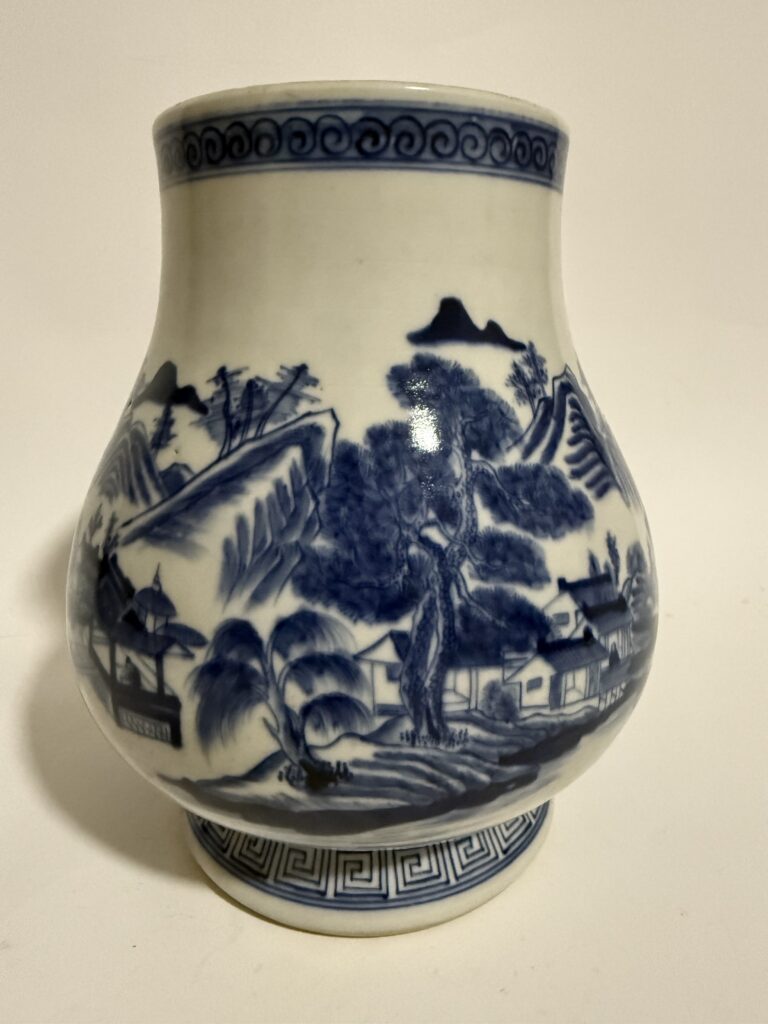
清代康熙青花山水纹琵琶尊
宫廷御瓷典范 文人山水意境
【藏品概述】
本品为清代康熙年间(1662-1722)景德镇窑口烧制的青花山水纹琵琶尊,属清代早期青花瓷经典之作。器形典雅端庄,青花发色浓艳明快,纹饰构图疏密有致,集实用与观赏价值于一体,是东方古典美学与制瓷技艺的完美融合,堪称清代御窑风格与文人意境的传世珍品。
【器形之美:琵琶雅韵 线条流畅】
本品造型因形似传统乐器琵琶而得名“琵琶尊”,为清代康熙时期典型陈设用瓷。口沿微撇,束颈丰腹,底足外撇,整体线条由上而下婉转流畅——颈部内敛收束,腹部圆润饱满,底足稳健外扩,既显端庄大气,又含灵动韵律,展现清代早期制瓷工匠对器形比例的精准把控。胎体坚致细腻,釉面莹润如玉,灯光下可见釉质透亮,胎釉结合紧密,历经三百年岁月仍保持完好品相。
【纹饰之精:山水入瓷 意境悠远】
全器以青花为饰,纹饰层次分明,寓意吉祥,尽显清代文人审美意趣:
-
口沿:饰青花回纹一周,线条卷曲流畅,寓意“富贵连绵,生生不息”,为清代瓷器经典边饰;
-
腹部主题:绘山水人物图,远山含黛,近树葱郁,亭台楼阁掩映于苍松翠柏之间,溪水潺潺,小径蜿蜒,一派“小桥流水人家”的江南隐居之景。画师以“分水皴法”表现山石肌理,青花浓淡渐变自然,近景山石用浓笔重彩,远景山峦以淡青渲染,形成“墨分五色”的立体效果,笔触劲健洒脱,人物、屋宇细节清晰可辨,尽显“咫尺千里”的山水意境;
-
底足:饰“万字不到头”几何纹,线条交错往复,象征“福寿绵长,吉祥无尽”,与口沿回纹首尾呼应,整体纹饰布局和谐统一。
【工艺之巅:康熙青花 浓艳明快】
本品采用清代康熙朝标志性青花工艺,尽显“康窑青花”巅峰水准:
-
用料:选用上等浙料(或珠明料),青花发色浓艳青翠,色阶丰富,“料分五色”——从浓墨到淡青过渡自然,无晕散现象,体现康熙青花“翠毛蓝”“宝石蓝”的典型特征;
-
烧制:经高温一次烧成,釉下青花发色稳定,釉面光洁平整,无冰裂纹,胎体致密,叩之声音清脆,彰显景德镇御窑厂严格的烧制把控;
-
绘画:全器纹饰均为手工绘制,画师以“铁线描”勾勒轮廓,再以分水技法填色,山石、树木、屋宇的笔触各具特色,刚柔并济,展现清代早期瓷绘工匠精湛的绘画功底。
【历史价值:康乾盛世 制瓷巅峰】
康熙朝为清代青花瓷发展的黄金时代,此时社会稳定,经济繁荣,景德镇御窑厂汇聚天下名匠,制瓷技艺达到历史巅峰。本品即为此时期民用瓷中的精品(或“疑似官搭民烧之作”,视具体考据而定),不仅承载了清代早期制瓷工艺的最高水平,更折射出康熙年间“崇儒重道”的社会文化氛围——山水纹饰中蕴含的“天人合一”“寄情山水”思想,正是清代文人精神世界的缩影。
【收藏与陈设】
-
收藏价值:清代康熙青花瓷存世量日渐稀少,本品器形完整,纹饰清晰,青花发色纯正,无明显瑕疵,为古董收藏市场中备受追捧的“硬通货”,兼具历史价值、艺术价值与稀缺性;
-
家居陈设:适合陈列于书房案头、客厅博古架或玄关端景台,与红木家具、古琴、水墨书画等中式元素搭配,瞬间提升空间文化底蕴,为现代家居注入东方古典雅韵。
【养护须知】
-
本品为易碎古董瓷器,请勿剧烈碰撞或挤压;
-
避免阳光直射及潮湿环境,建议存放于恒温恒湿的展示柜中;
-
清洁时用软质干布轻拭表面灰尘,切勿使用湿布或化学清洁剂,以防损伤釉面。
VirtuCasa甄选——让东方古董之美,融入世界收藏版图。

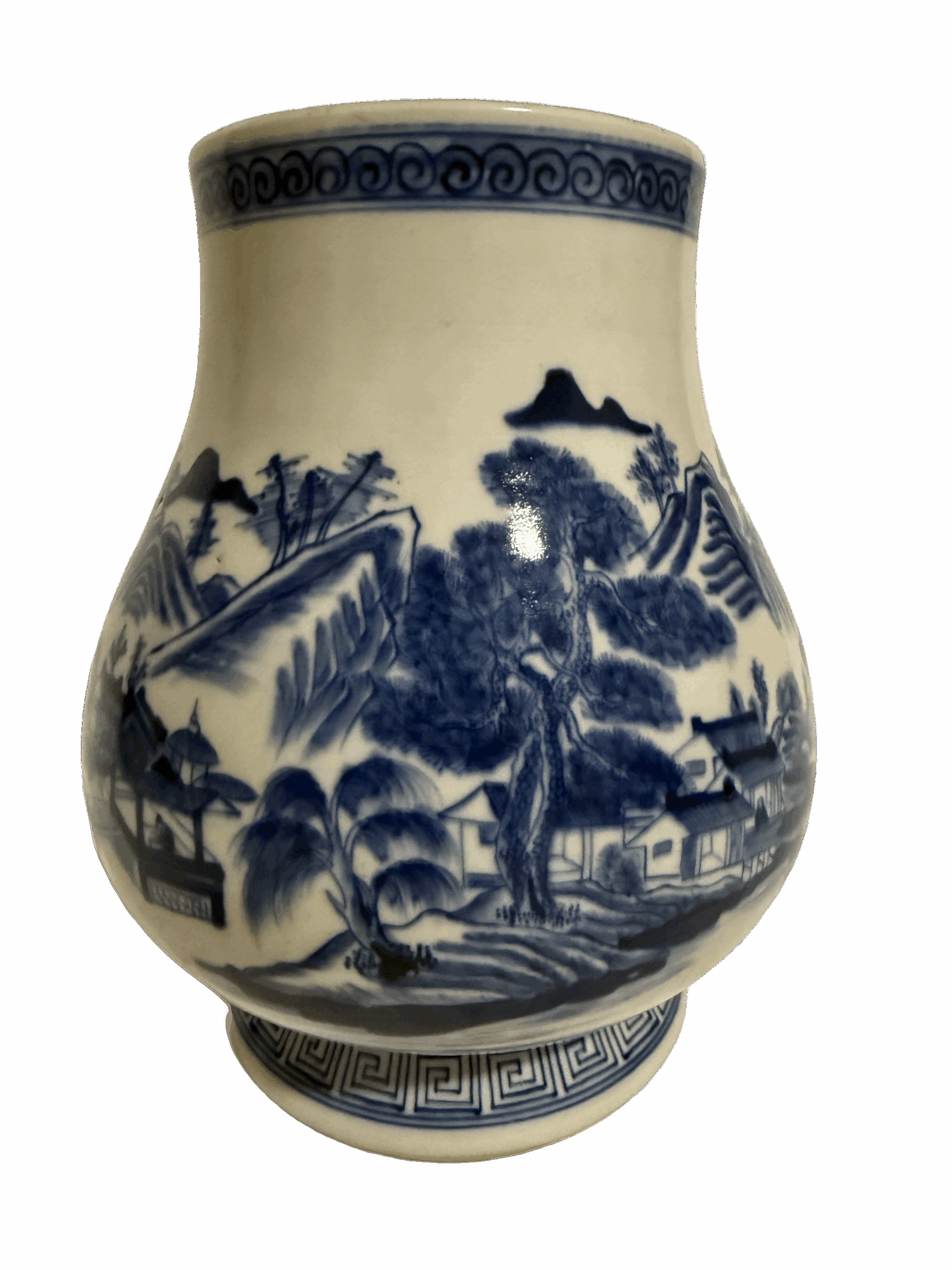
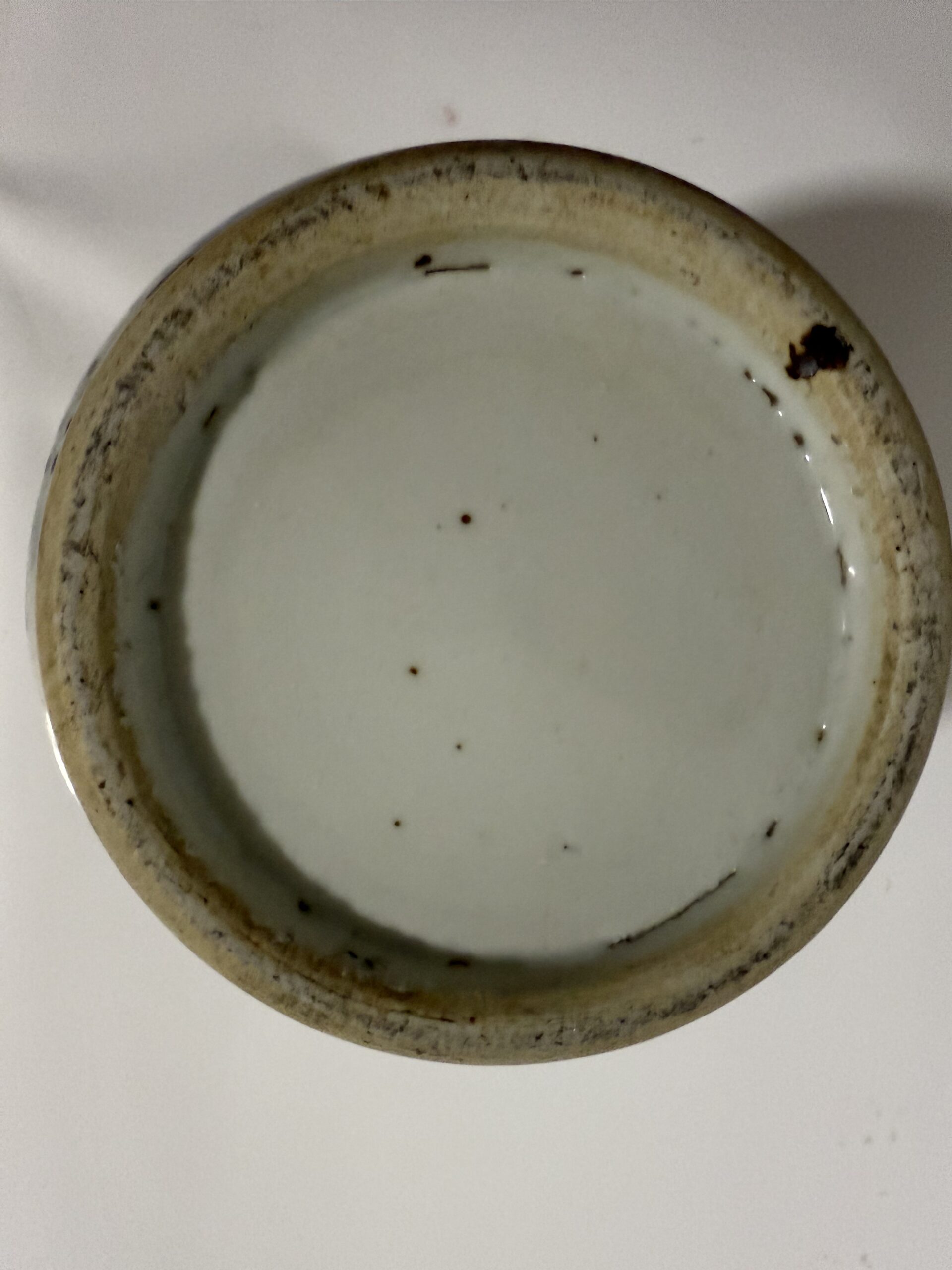
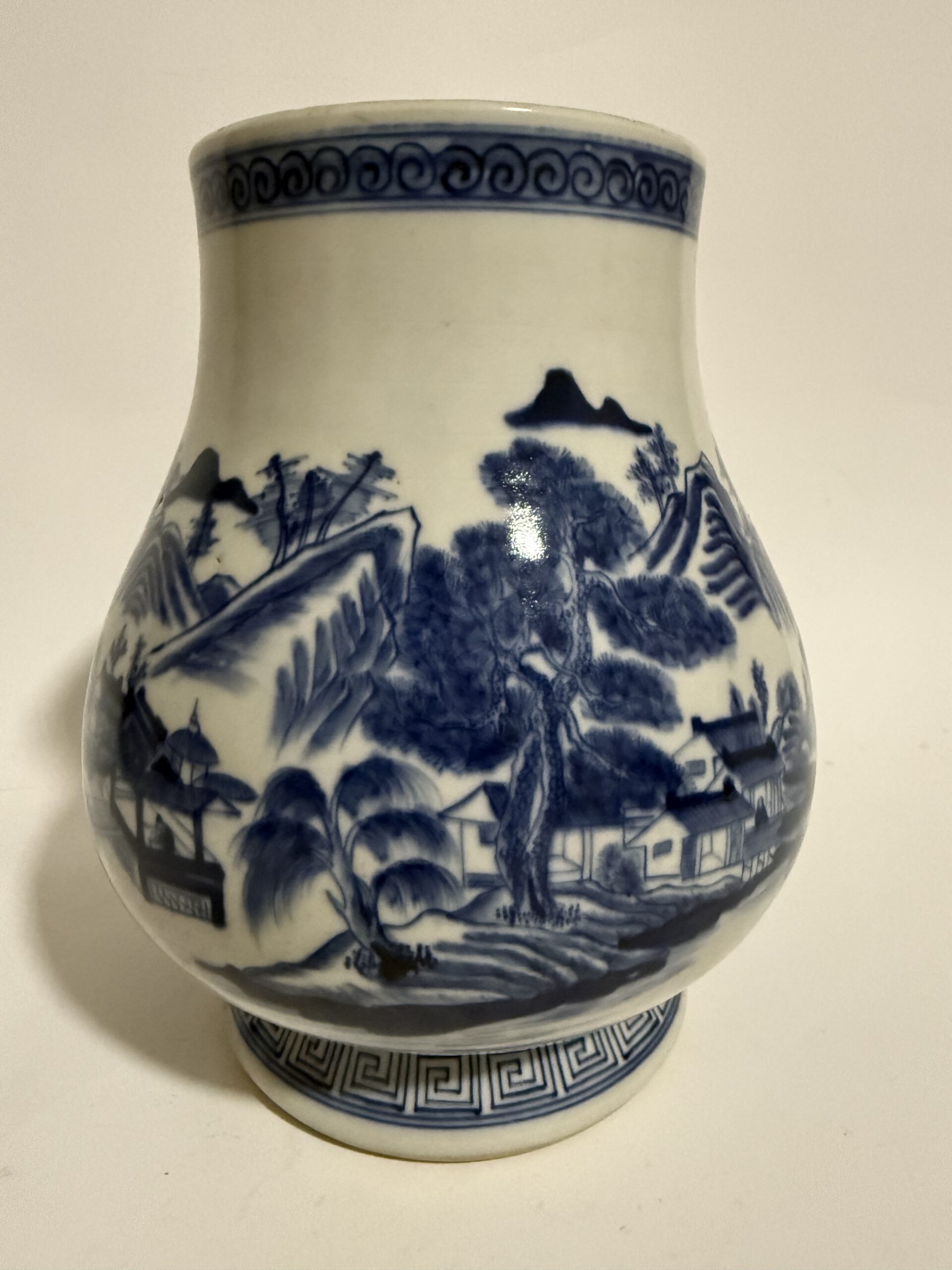
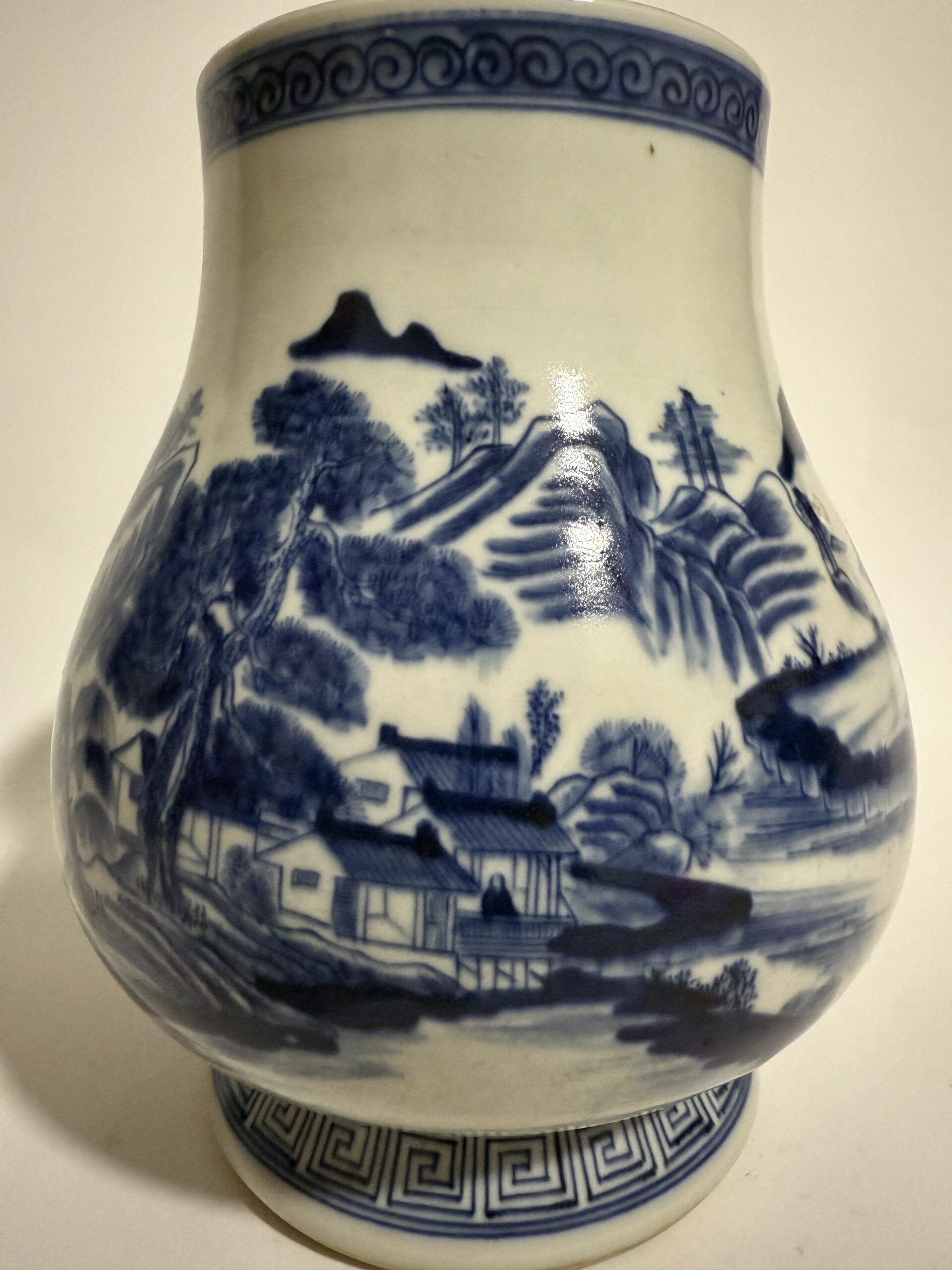
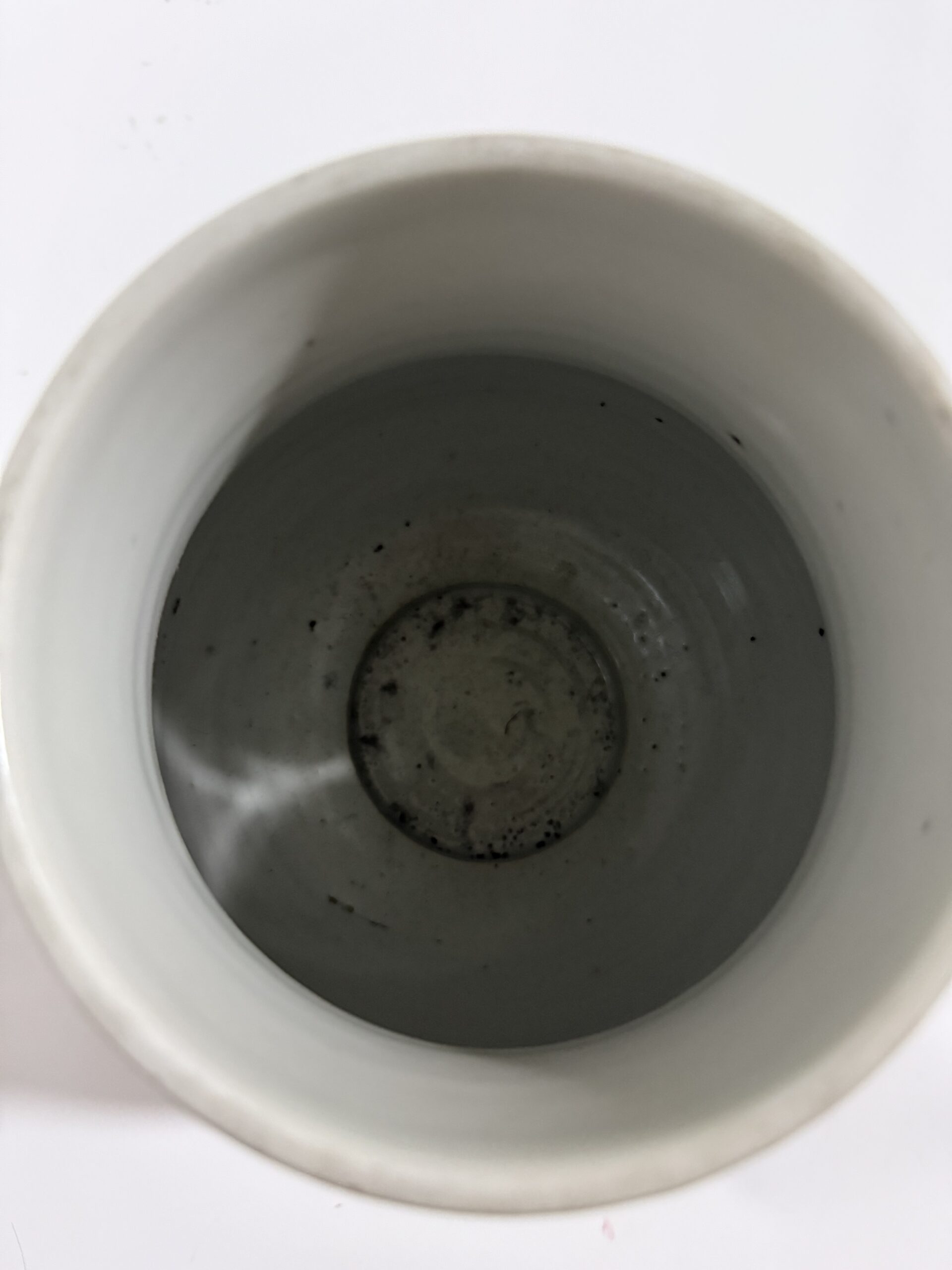

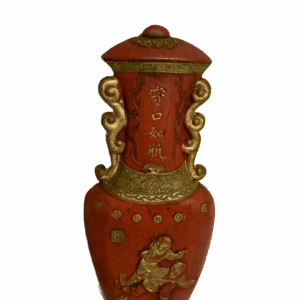
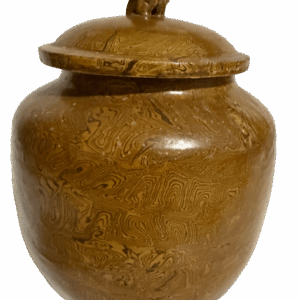
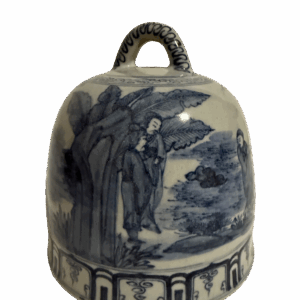
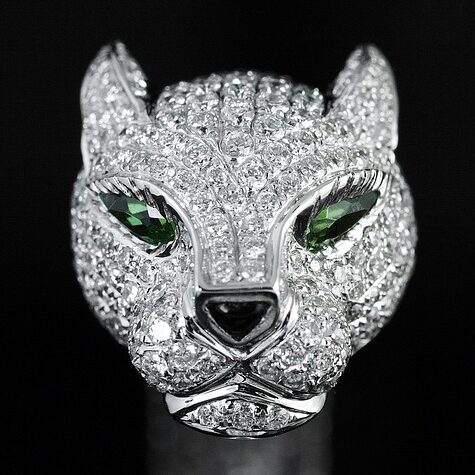
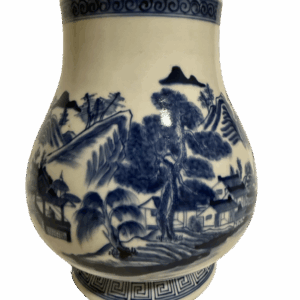
Reviews
There are no reviews yet.